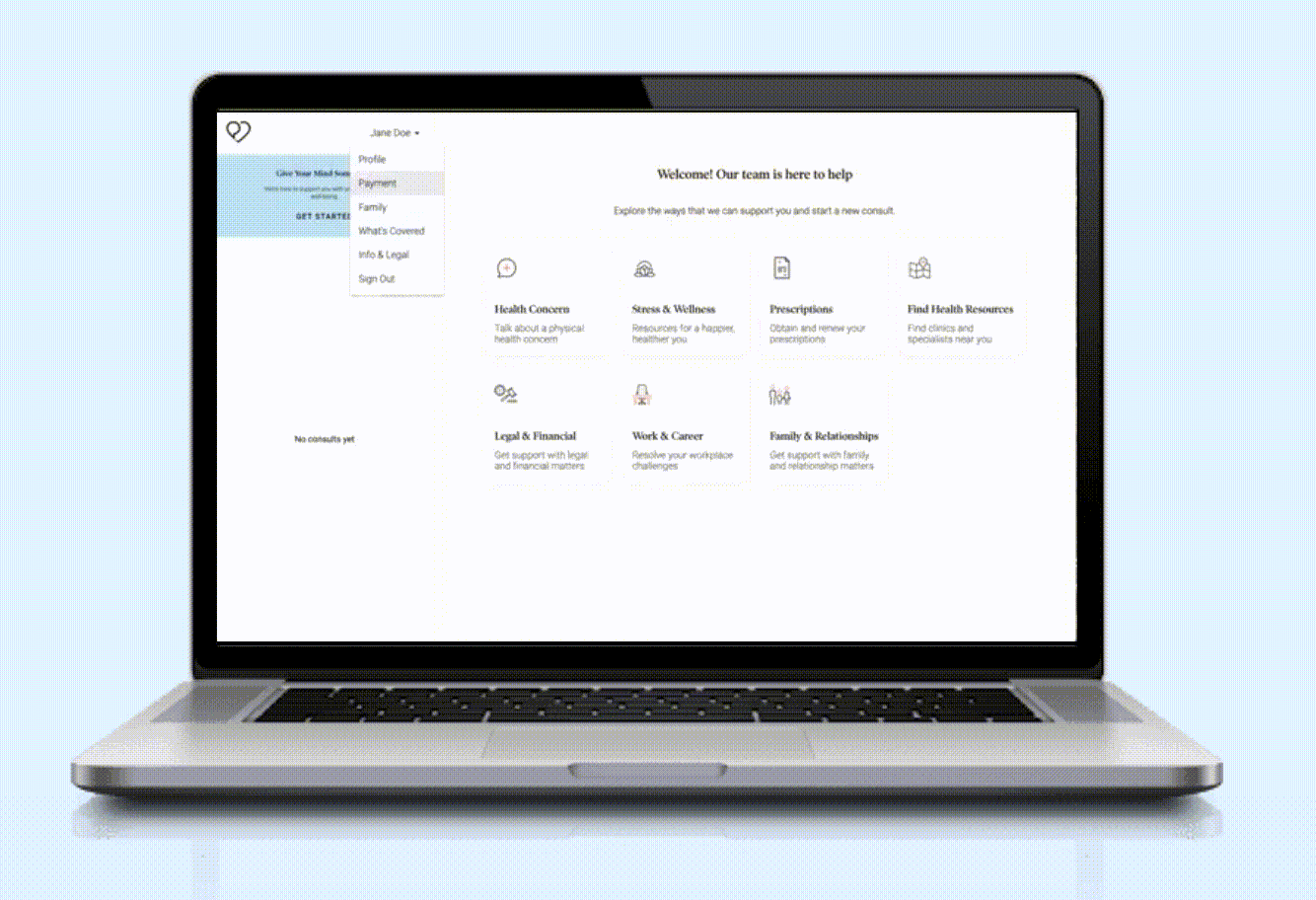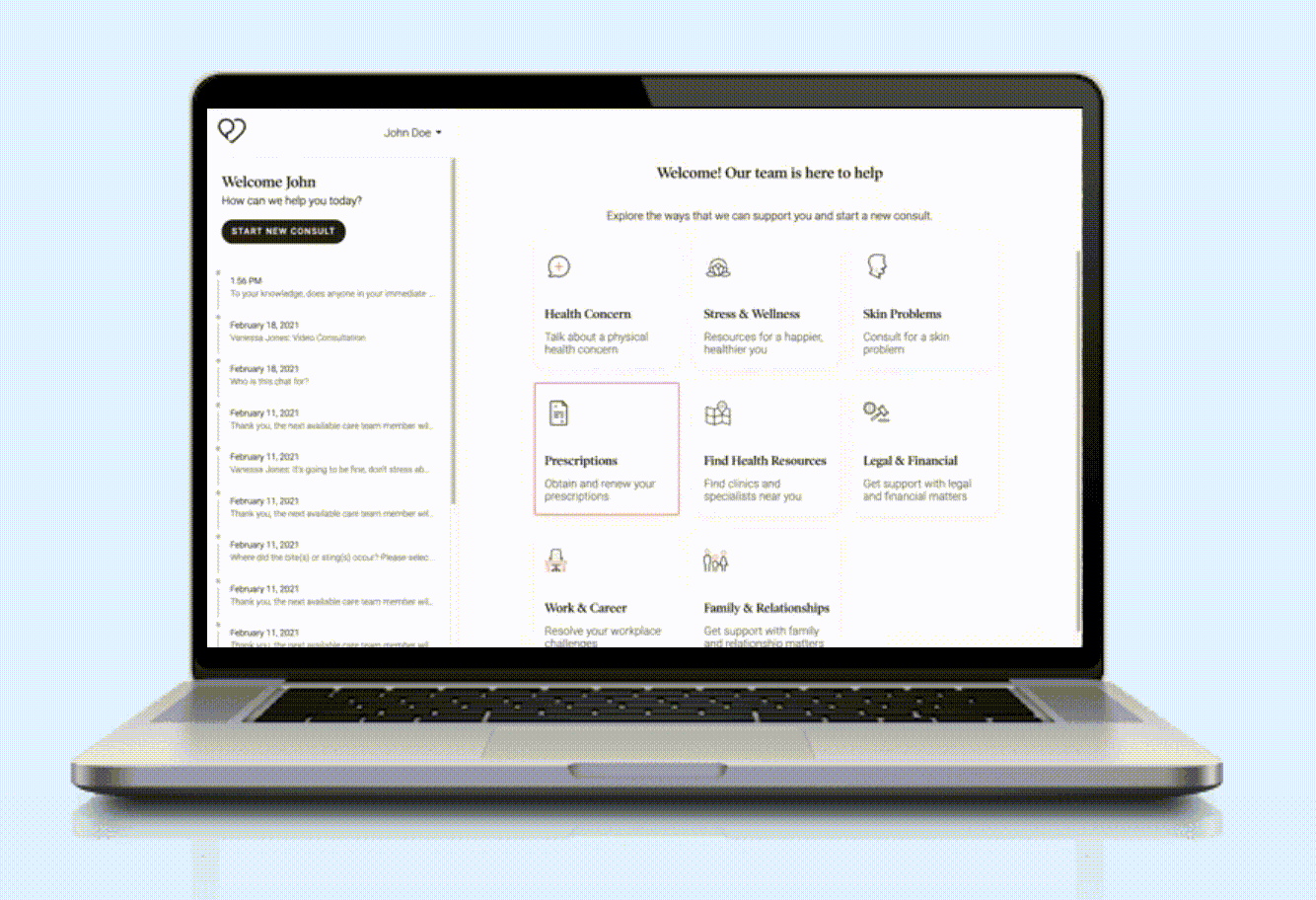Welcome to this month’s product updates newsletter - spotlight edition on accessibility!
This month we wanted to share more on our commitment to accessibility—how inclusive design is now a part of our core principles, and how we’re applying those principles to evolve our virtual care platform to make sure that all of our members have the best healthcare experience they deserve.
Read on to learn more.
Our commitment to accessibility at Dialogue
According to the 2017 Canadian Survey on Disability Reports, one in five (22% of the population) aged 15 years and older - or about 6.2 million Canadians - identified as having a disability, and it is expected that the actual numbers are likely higher.
A disability is a condition of the body or mind (impairment) that makes it more difficult for the person with the condition to do certain activities, such as interacting with a Web application. Types of common disabilities include cognitive, motor functions/mobility, speech, and visual. This means a Web application that mostly requires mouse-clicking to interact with its features is a barrier for people with mobility issues. Likewise, interactions mainly based on text on a screen, such as a chat or help instructions are a barrier for people with a cognitive or a visual impairment.
What is digital accessibility?
Digital accessibility is the ability for everyone to access and enjoy the Web. Just as ramps, signs in braille, and audible pedestrian systems help people with disabilities better navigate the physical world, accessible web design removes barriers that prevent full use of digital applications. Our daily lives are already increasingly digital, and the importance of social distancing because of the COVID-19 pandemic, means we are now more than ever reliant on digital platforms for every day activities.
Virtual healthcare - getting access to non-urgent medical care via a Web or mobile app - is no exception. In fact, according to our 2020 Canadian Attitudes on Healthcare and Telemedicine report, 70% of Canadians agree that virtual healthcare represents the future of healthcare as it makes it easier, and faster to get access to medical care.
Best-in-class virtual healthcare for all
Dialogue is dedicated to providing a respectful, welcoming, accessible, and inclusive environment for all. As part of our commitment, we are focused on ensuring that Dialogue meets Web Content Accessibility Guidelines (WCAG) 2.0 AA standards as required by the Accessibility for Ontarians with Disabilities Act (AODA) to address the major and most common accessibility issues, and that our best-in-class healthcare services are accessible for all of our members, including those with visual, hearing, motor and cognitive challenges.
Over the past several months, we’ve reimagined our Web app—thinking about accessibility from the ground up, and testing every feature with assistive technology. Here are a few key examples of updates we’ve released:
-
Catch every bit of help, alert or error message
 Lee’s organization recently added Dialogue to their employee benefits package, and he’s in the process of completing his profile to get started. Because of his colour blindness, he normally struggles to complete digital forms, as it’s common practice for Web apps to use colours (i.e. red) to direct a person’s attention to an error message or to communicate helpful information.
Lee’s organization recently added Dialogue to their employee benefits package, and he’s in the process of completing his profile to get started. Because of his colour blindness, he normally struggles to complete digital forms, as it’s common practice for Web apps to use colours (i.e. red) to direct a person’s attention to an error message or to communicate helpful information.
With Dialogue’s fine-tuned colour scheme and visual / text markers (not just based on colour) for better contrast between background and interactive elements, he’s able to complete his profile with ease, and even add his family members so they too can have access to Dialogue’s care team for medical advice.
-
Interact with a Web app that doesn’t SUX (Some Users Experience)
When an app isn’t designed with all users in mind, it SUX i.e. based on only some users’ experience, but not everyone’s. People’s interactions with Web applications vary quite significantly, so designing for all might be a tall task, however, accessibility standards help map out how to be more inclusive than not at all.
Loss of limb or for example, Alex who has developed a repetitive stress injury that makes it painful to use a mouse for extended periods of time, hinder mobility and make it more difficult to interact with many Web apps. By using his keyboard only (without a mouse), Alex is able to navigate the Dialogue app home screen, access the medical discipline most suited to his concern, and is able to use the self-booking feature for an appointment with a mental health specialist that same day.
-
Experience the power of speech
Monique, a chief accountant at an insurance company, is visually impaired and encounters many barriers when using Web apps, most of which are primarily based on visual interactivity.
Following her video call with one of Dialogue’s doctors about the rash that has developed on her arm, she chats with a nurse to get the prescription the doctor recommended. She is able to interact with the nurse with the help of a screen reader (text-to-speech software), in which back and forth messages are verbally read and inputted, and is even alerted by sound when she receives a new message.
The Dialogue app works with NonVisual Desktop Access (NVDA), the most widely used screen reader for Microsoft Windows, and also works with VoiceOver for Mac operating systems, so can be used by a broad range of users.
Barrier-free digital spaces create a better overall experience for all users—even if you simply have a slow internet connection, or you’re a busy multi-tasker, accessibility features help to optimize interactions no matter what your preferences are or means of interaction.
Keep your app up-to-date
At Dialogue, we've embraced digital inclusion in the design and development of our platform. As part of our commitment to accessibility, we’ve reimagined our virtual care experience and continuously review and test our platform from different perspectives, such as using assistive technology like screen reading software. If you have any questions or feedback on the accessibility of our platform, we would love to hear from you! Please reach out to us at: support@dialogue.co.
We aim to provide all of our members with the best virtual care experience, so don’t forget to keep your Dialogue app up-to-date to take advantage of new features and improvements. If you’re an iOS or Android user, turn on automatic updates to never miss one!






 Canada (EN)
Canada (EN)
 Global (EN)
Global (EN)







